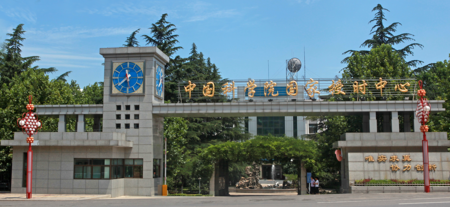Few infrastructures are as invisible as time, but its precision underpins much of the modern world. In China, that pulse is set by a scientific center in Xi’an that adjusts everything from bank clocks to defense systems. Now, that same center has become the epicenter of a serious accusation: the Chinese Government claims to have detected evidence of an intrusion by the US National Security Agency (NSA, the body that together with the CIA leads US intelligence operations) into its network, directed against the system that maintains the country’s official time.
The center that tells the time of China. The National Time Service Center (NTSC) of the Chinese Academy of Sciences is much more than a laboratory: it is the reference that generates, maintains and transmits the country’s official time. From its network of stations and atomic clocks, communication, banking, energy, transportation and even defense systems are synchronized. In addition, it participates in the calculation of Coordinated Universal Time (UTC) and maintains a deviation of less than five nanoseconds from it, which places it among the four most precise timekeeping centers in the world.
A prolonged offensive in three phases. According to information released by CGM (via CGTN), the operation attributed to the US National Security Agency began in March 2022, when a vulnerability in the messaging service of a foreign phone was exploited to access the devices of several NTSC employees. Starting in April 2023, using stolen credentials, attackers penetrated internal systems. Between August 2023 and June 2024, activity intensified with sustained attacks against the organization’s most sensitive networks.
According to the investigation, the operation was not limited to a specific entry. After violating the messaging application of a foreign smartphone, the attackers would have taken control of the mobile phones of several employees and extracted passwords and authentication data. That information was used to maintain remote access to NTSC servers without being detected. Chinese authorities define the intrusion as “planned, structured and constantly escalating,” a description that points to a sustained campaign rather than an isolated incident.

Objective: High precision timing system. The official story focuses on a highly sensitive target: the NTSC precision ground timing system, identified in the communications as “high-precision ground-based timing system.” According to CMG, the intruders attempted not only to gather information, but also to insert offensive capabilities that could render that infrastructure useless, with the possibility of “paralyzing or destroying” its operation.
Attributed methods and camouflage. They also point out that the offensive was not limited to rudimentary techniques: they say it deployed a new platform with 42 specialized cyber weapons and advanced camouflage methods. The attackers used VPS located in multiple regions to hide their origin, used fake certificates to gain trust in networks, and bypassed antivirus systems while applying strong encryption to eliminate records of the intrusion. The command and control infrastructure included VPS in Europe, the United States and Asia.
When time becomes a strategic objective. Beijing maintains that the NTSC defenses managed to stop the offensive before the national timekeeping was altered. But the attempt, authorities emphasize, demonstrates that an apparently technical system can become a strategic objective. The possibility of manipulating the measurement of time—even marginally—opens a scenario of unpredictable consequences. The case has revived concern about the security of invisible infrastructures, those that are not seen, but support the functioning of the country.
The Ministry of Security claimed to have gathered “conclusive evidence” of the attack, after which it helped the NTSC cut the chains of intrusion and strengthen its systems. According to China Media Group, the intervention made it possible to eliminate potential risks and restore the integrity of the network. The authorities assured that the incident served to update defense mechanisms and strengthen supervision of critical infrastructures. No technical details were provided on the measures adopted or on cooperation with other state agencies.

Between the official story and the lack of response. For now, the attack remains in the realm of accusations. China claims to have gathered evidence of an NSA operation, while the United States has not responded. Without external verification, the true magnitude of the incident is difficult to measure. The episode illustrates, in any case, how security and temporal precision have become part of the board where global technological tensions are resolved.
Images | National Time Service Center (NTSC) (1, 2) | WorldOfSoftware with Gemini 2.5
In WorldOfSoftware | Unitree wants to conquer robotics in China and is making a move: it has just announced its most capable robot. Now the only thing missing is that there is demand












